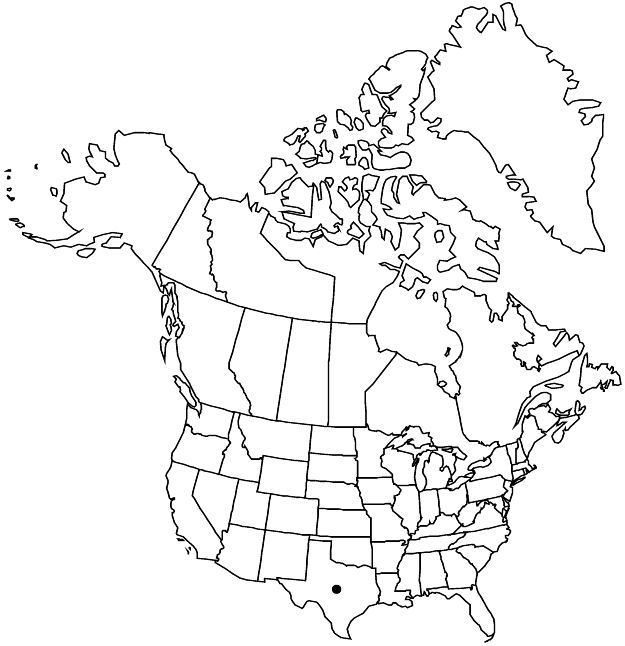Euphorbia peplidion
Rep. U.S. Mex. Bound. 2(1): 191. 1859.
Herbs, annual, with taproot. Stems erect, unbranched or branched, 5–20 cm, glabrous. Leaves: petiole 0–0.2 mm; blade linear-oblanceolate to cuneate-spatulate, 5–20 × 1–4 mm, base attenuate, margins entire, apex rounded to obtuse, surfaces glabrous; venation inconspicuously pinnate, midvein prominent. Cyathial arrangement: terminal pleiochasial branches 3 (–5), 1–3 times 2-branched; pleiochasial bracts linear, lanceolate, or spatulate, similar in size to distal leaves; dichasial bracts distinct, rhomboid-lanceolate to ovate, falcate, base rounded to obtuse, margins entire or slightly erose, apex acute; axillary cymose branches 0–3. Cyathia: peduncle 0.3–0.5 mm. Involucre broadly campanulate-turbinate, 0.8–1 × 0.6–0.9 mm, glabrous; glands 4, elliptic, 0.2–0.3 × 0.5–0.6 mm; horns divergent, 0.4–0.5 mm. Staminate flowers 5–10. Pistillate flowers: ovary glabrous; styles 0.5–0.7 mm, 2-fid. Capsules depressed-globose, 1.8–2.3 × 2.6–3 mm, 3-lobed; cocci slightly flattened, without wings, smooth, glabrous; columella 1.3–1.5 mm. Seeds gray to brown, oblong, 1.3–1.6 × 0.9–1.1 mm, abaxial faces irregularly large-pitted, adaxial faces longitudinally sulcate; caruncle flat, umbonate, 2-lobed, 0.4 × 0.7 mm.
Phenology: Flowering and fruiting late winter–spring.
Habitat: Dry, sandy areas, open areas with poor soils, roadsides, stream banks.
Elevation: 100–300 m.
Discussion
Euphorbia peplidion is native to central and south-central Texas.
Selected References
None.
Lower Taxa
"connate" is not a number. "distinct" is not a number."connate" is not a number. "distinct" is not a number.
